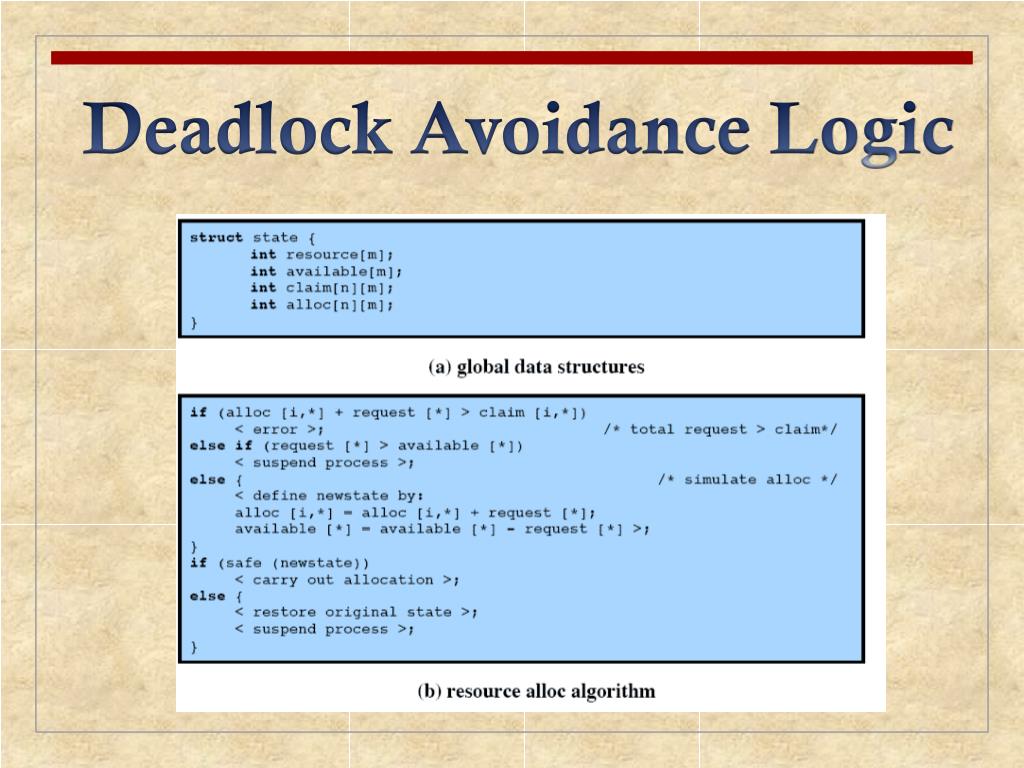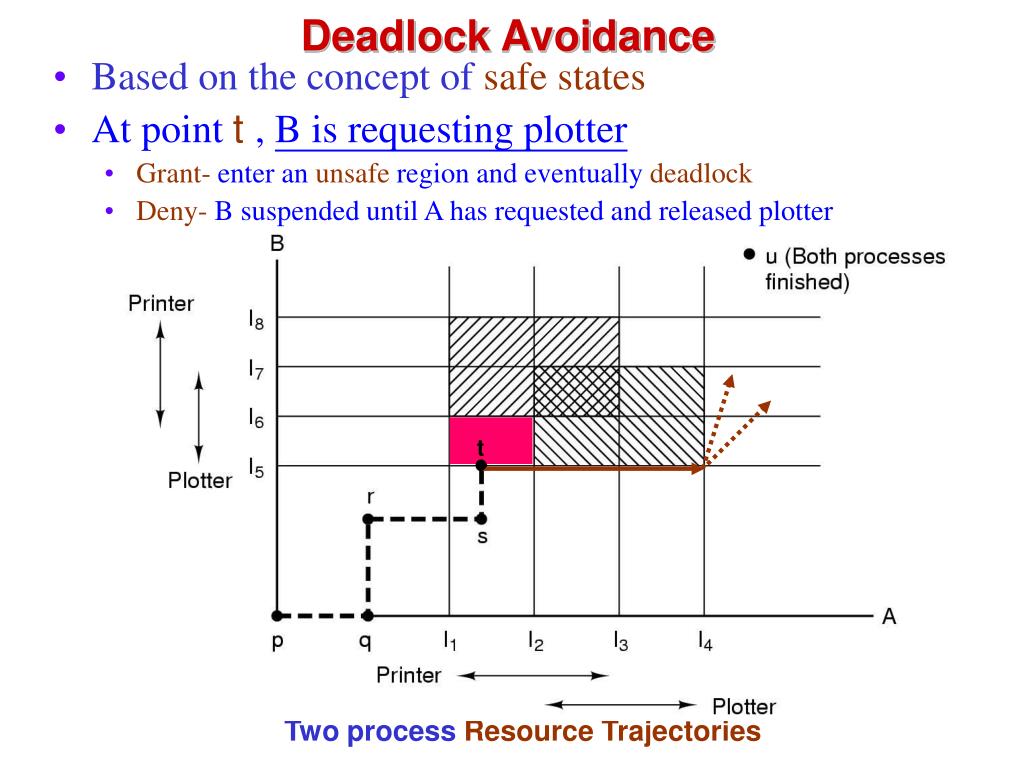

The two threads would each attempt to lock the same two locks in the opposite order from the other. (All resources from type Ri must be requested together) Rule: To request the resources of type Rj, first release all resources from type Ri where Ri The code in the example does not impose any locking order because it locks the locks in whatever order the arguments come in. All the text really tells you is, imposing a strict locking order won't help you if you don't impose a strict locking order. That is, one thread might invoke transaction(checking account, savings account, 25) Īnd another might invoke transaction(savings account, checking account, 50) Ĭan anybody please help me understand the meaning here? What is Deadlock Avoidance Schedules request carefully with global. To prevent a race condition, each account has an associated mutex lock that is obtained from a get lock() function such as shown in the following program: void transaction(Account from, Account to, double amount)ĭeadlock is possible if two threads simultaneously invoke the transaction() function, transposing different accounts. Impose a total ordering on lock acquisition. For example, assume we have a function that transfers funds between two accounts. Imposing a lock ordering does not guarantee deadlock prevention if locks can be acquired dynamically. Circular Wait impose a total ordering of all resource types, and require that each process requests resources in an increasing order of enumeration. This avoids the deadlock scenario where thread 1 hold lock A and needs lock B while thread 2 holds lock B and needs lock A. , lockn by calling trylock in order beginning with the first. lockn) Tries to lock each of the given Lockable objects lock1, lock2. Cpp reference by trylock int trylock ( Lockable1& lock1, Lockable2& lock2, LockableN&. , lockn using a deadlock avoidance algorithm to avoid deadlock. Make sure that all threads acquire locks or other resources in the same order. Locks the given Lockable objects lock1, lock2. Here is an example for a better understanding. Unable to understand the following text taken from Galvin 9th edition Chapter 7 Deadlock. The canonical technique for deadlock avoidance is to have a lock hierarchy. Use Lock Ordering: In this method, each lock has a numeric value, and if we acquire the locks with a lower numeric value before those with a higher numeric value, we can avoid a deadlock situation.#Deadlock avoidance lock ordering code




 0 kommentar(er)
0 kommentar(er)
